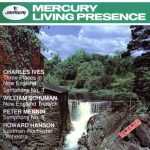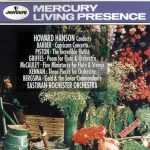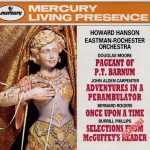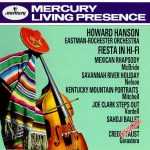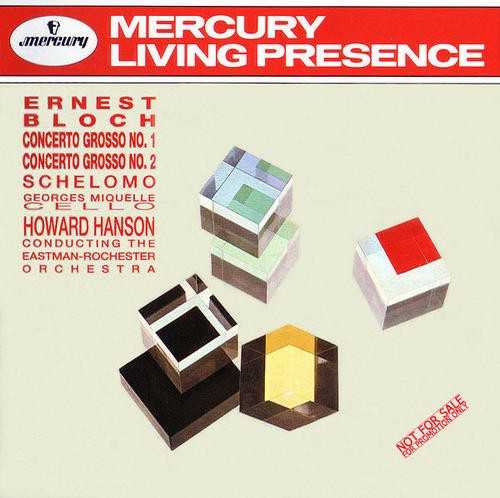
Composer: Ernest Bloch
Performer: Georges Miquelle
Orchestra: Eastman-Rochester Orchestra
Conductor: Howard Hanson
Audio CD
Number of Discs: 1
Format: APE (image+cue)
Label: Mercury
Size: 336 MB
Recovery: +3%
Scan: yes
01. Bloch: Concerto grosso No.1 – 1. Prelude: Allegro energico e pesante
02. Bloch: Concerto grosso No.1 – 2. Dirge: Andante moderato
03. Bloch: Concerto grosso No.1 – 3. Pastorale and Rustic Dances
04. Bloch: Concerto grosso No.1 – 4. Fugue
05. Bloch: Concerto grosso No.2 – 1. Maestoso
06. Bloch: Concerto grosso No.2 – 2. Andante
07. Bloch: Concerto grosso No.2 – 3. Allegro
08. Bloch: Concerto grosso No.2 – 4. Tranquillo
09. Bloch: Schelomo
Great American Music
Both Hanson and Bloch are great American composers who were once more widely appreciated. Howard Hanson was born in Wahoo, Nebraska to Swedish parents, and Ernst Bloch was an immigrant from Switzerland. Bloch was so deeply appreciative of his adopted land that later he wrote “America – An Epic Rhapsody” (conducted by Stokowski with chorus and orchestra).
The “Mercury Living Presence” feature of this recording antedates the development of stereophonic sound, but its effect brings the sound amazingly real and close. Under Hanson’s baton the string orchestra is precise and trenchant.
The first movement of the Concerto Grosso No. 1 is one of the most committed musical segments ever written. It is completely purposeful and decisive. The second movement is like a retrospective, or thoughtful hesitation, with minor and major keys alternating rapidly, and sometimes coinciding. The minor theme is like a review of the sadness, perhaps of a life, with the coincidence of major and minor representing cognitive and emotional dissonance and pain previously endured. Then in the third movement happy little tunes start to emerge, almost like folksongs, as though the composer had been given permission to enjoy, or discover happiness. The fourth and final movement is one of the most impressive five-part fugues anywhere in music. J.S. Bach would have been proud. It weaves the four string voices together with the piano as a fifth voice, and emerges as a triumph of integration. And isn’t that what a fulfilled life is all about? To me, the piece sounds tremendously vital and life-affirming.
The other pieces on the CD will take longer to appreciate – don’t expect to like them until several listenings. But the first Concerto Grosso is a masterpiece. Occasionally I listen to the Concerto Grosso No. 2, which is good composition, but not as persuasive or powerful. Lastly, the Hebraic melody, Schelomo, is far too sad to bear much listening, unless one is actively grieving.
